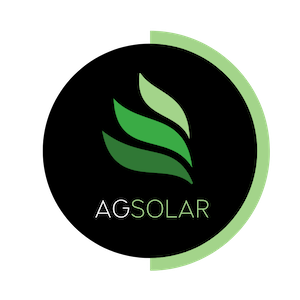

Finn's Tesla Powerwall 2 Review & Verdict
Finn Peacock has been a Chartered Electrical Engineer since 1998, and is ex-CSIRO
The Powerwall 2 was a good choice of battery. I have one on my home and, as of 2025, it has run for 7 years at a daily average of 70% of capacity, with only a 7% loss of battery capacity. The low capacity loss indicates its battery cells are durable and Tesla's battery management is top-notch.
Tesla allowed the Powerwall 2's listing on the CEC's approved battery list to lapse on August 24, 2025, and so they can no longer receive the federal battery rebate. While they can still be installed, this is now normally only done as replacements for existing Powerwall 2s.
While most Powerwall 2s have operated well, the battery has not been problem free, with some being recalled in September 2025.
If you want a Tesla battery that's available and can receive the federal battery rebate, you can consider the Powerwall 3.
Tesla Powerwall 2: Pros & Cons
- Very reliable, low degradation.
- Good support.
- The best app in its class.
- Great for retrofits.
- If a property has single-phase power it can charge from solar in a blackout.
- Backup Gateway offers extra space, which may save you an expensive switchboard upgrade.
- If combined with a Tesla car, it offers 'Charge From Solar' via any brand of EV Charger
- Reassuringly expensive.
- Reassuringly expensive.
- Cannot support a 3-phase load.
- Sometimes limits potential solar installation as some DNSPs don't differentiate between solar inverters and battery inverters. The grid connection capacity is then used up by the battery.
- No black start capability, that is, requires intervention if the battery goes flat and the mains supply isn't available.
- Does not support a generator.
- No support for off-grid applications.
- Tesla now charges for API access to the battery to third parties.
- Generally unavailable and no longer receives the federal battery rebate.
- Elon Musk
About Tesla Powerwall 2
---
UPDATE: 18 September 2025. Certain Tesla Powerwall 2 batteries installed in Australia are subject to a recall after reports of battery cells in some systems smoking or venting flame.
---
Tesla, Inc. was founded in 2003, originally as Tesla Motors. Tesla headquarters are in Austin, Texas, with office locations around the world, including Australia. The company has expanded like a surprised pufferfish and, as of late 2025, is valued at $2 trillion Australian.
After succeeding in electric vehicle development, Tesla expanded into commercial and home battery storage. In 2015, accompanied by massive publicity, they launched the Tesla Powerwall battery and followed up with the Powerwall 2 in 2016. In September 2025, Tesla claimed to have sold 1 million Powerwalls in total.
The Powerwall 3 was launched in August 2024. The Powerwall 2 was sold for a period after its launch, but now, if you want a new Powerwall 2, you're almost certainly out of luck. They no longer qualify for the federal battery rebate and are generally only installed as warranty replacements for existing Powerwall 2s.
Powerwall 2 Features
Notable features of the Powerwall 2 are:
- Usable storage capacity of 13.5 kilowatt-hours (kWh) when new
- Continuous power output of 5 kilowatts (kW)
- It's an AC coupled battery and so compatible with any existing solar system
- Suitable for indoor or outdoor installation
- Provides backup power and – for single-phase homes only – can charge from solar during a blackout
- A warranty of up to 10 years
If you want the pros & cons of a Powerwall 2 from an installer’s point of view, take a look at this blog post.
Backup Gateway 2 Required
If you only look at Tesla’s promotional pictures, you’d be forgiven for thinking the Powerwall 2 installation consists of a single white rectangle. But what these pictures leave out is that, in addition to cables, a Powerwall will also need a Backup Gateway 2 mounted near it. This is a box around half the height and width of a Powerwall 2. It’s required for the electrical connection to the home and makes backup power possible.
One Gateway can potentially accept up to 10 Powerwall 2s, so if you already have one and somehow get your hands on another, you can use your existing Gateway.
13.5kWh Storage Capacity
The Powerwall 2 has 13.5kWh of usable storage capacity – enough to meet typical overnight household electricity consumption. The available storage will gradually decline over time and with use. Tesla’s warranty promises it will retain at least 70% of its original capacity, but many have done much better than that so far.
5kW Continuous Power
The Powerwall 2 can supply a continuous 5kW of power. While less than the 10kW the Powerwall 3 can provide in most locations, typical households rarely draw more than 5kW for an extended period, so it’s normally sufficient to meet most household demand.
Extra Storage & Power With Extra Powerwalls
Going from one to two Powerwall 2s can potentially double the amount of power available for both charging and discharging. Three-phase homes can have one or more installed on each phase, but this won't give the ability to run 3-phase appliances if the grid is down.
Operating Temperature
The Powerwall 2’s operating temperature is from -20°C to 50°C. Unlike some batteries that won't discharge if the temperature is below freezing, it will both charge and discharge down to -20°C. So, unless you’re in the Not-So-Snowy-These-Days Mountains, the lower limit isn’t going to be an issue. The upper limit is fine for most households, as no Australian capital has hit 50°C yet. But as the temperature approaches its upper limit, the Powerwall 2 can derate and reduce its maximum power output.
Indoor Or Outdoor Installation Okay
The Powerwall 2 can be installed indoors or outdoors. It has an Ingress Protection rating of IP67, which means it’s dust-tight and resistant to powerful jets of water. While other components aren’t as well rated with the Backup Gateway 2 being IP55, this is still enough to resist rain and make it suitable for outdoor installation. Because heat is bad for batteries, it’s always a good idea to install it out of direct sunshine whenever possible.
The Powerwall 2 can be mounted on a wall or on the ground. But even if it's placed with its weight on the ground, it’s still designed to have its back against a wall. If there’s no suitable wall it can be mounted on steel poles set in concrete, but this will complicate the installation.
Size & Weight
The Powerwall 2 dimensions and weight are:
- 1150mm x 753mm x 147mm
- 114kg
This makes the Powerwall 2 more compact than modular battery systems of comparable capacity.
The Backup Gateway 2, which needs to be installed along with it, is…
- 660mm x 411mm x 149mm
- 20.4kg
The Gateway box looks like a baby version of the Powerwall 2 so it won't look out of place next to it.
Round Trip Efficiency
Because there are always losses when charging and discharging batteries, more energy has to be put into them than can be taken out. The percentage of energy put in that you can get out is its roundtrip efficiency. When it first came out, Tesla said the Powerwall 2's roundtrip efficiency was 88%. Now Tesla says it’s 90% -- with the caveat that it's only when new. This strongly suggests it will decline over time. With a roundtrip efficiency of 90%, it will need to be charged with 1.11kWh to provide 1kWh of stored energy and if it’s 88%, it will need to be charged with 1.14kWh.
Noise Level
Tesla gives the noise output of the Powerwall 2 as under 40 decibels at 30 degrees. This is about as loud as a typical modern fridge, which normally should not be a problem. But it can get louder when it’s hotter and may reach 58 decibels, which is about as noisy as a microwave oven.
Backup Power
When the grid fails, a Powerwall 2 can provide 5kW of backup power. If you have single-phase power it can potentially backup your entire home, but I suggest only backing up your most important appliances. This will help prevent you from trying to draw more than 5kW, which will cause a temporary shutdown. It can also stop you from rapidly draining it.
If you have single-phase power the Powerwall 2 can charge from solar during a blackout. But if your home has 3-phase power, the Powerwall 2 will only be able to supply backup power to the phase it’s connected to and will not be able to charge from rooftop solar.
If you have 3-phase power, you can put Powerwall 2s on the other phases, but in a blackout they still won’t be able to charge from solar and, because they won’t be synchronized, they won’t be able to provide power to 3-phase appliances.
Another limitation of the Powerwall 2 is it doesn’t have black start capability. This means if it’s completely drained it won’t be able to start again if the grid is down. So a single-phase home could potentially use a Powerwall 2 for days or even weeks of backup by charging it from solar, but if it ever goes completely flat it can’t be used until the grid is operational. The Powerwall 2 doesn’t support generators and you can’t get around this limitation by using one.
You can set a Powerwall 2 to always reserve some stored energy in case of a blackout. Powerwalls also have a Storm Watch function that will cause it to charge from the grid if a bad storm is predicted – but it doesn’t always get local weather right.
Motor Starting Capability
When home batteries are providing backup, they can have difficulty starting electric motors. This is because motors can require up to 7 or 8 times as much current as they normally draw to get started and this is normally provided by the grid. But the Powerwall 2 can provide extra power for a short period and Tesla says it has 106 amp motor start capability. This means it can start most motors that draw 3.6kW or less in normal operation. As it’s rare to have motors larger than this, it should be sufficient for most homes.
But note you’ll never be able to start any 3-phase motor while your Powerwall or Powerwalls are providing backup. So if you have a 3-phase air conditioner, it won’t be able to run.
Off-Grid Use Not Supported
While people have used them off-grid, Tesla no longer supports or recommends off-grid use of the Powerwall 2.
Monitoring App
The Powerwall 2 can be remotely monitored using the Tesla Mobile App, which is one of the better battery monitoring apps available.
Warranty
If your Tesla Powerwall 2 is not part of a Virtual Power Plant (VPP) and not used to send electricity into the grid, then its warranty will last for a full 10 years. If it is used to send power into the grid, then the warranty will last for 10 years or until it has discharged a total of 37,800kWh.
If you buy a Powerwall 2 and join a VPP then, provided it discharges an average of less than 10.4kWh of stored energy per day to the home or grid, its warranty will last the full 10 years. If you discharge a daily average of its full usable storage when new, 13.5kWh, then the warranty will last 7 years and 8 months. But as most homes’ average daily discharge is less than this, for many households the warranty will last a full 10 years or close to it, even if they join a VPP.
If you join the Tesla VPP you can get a 5-year extension to your warranty that allows unlimited cycles, but you’ll have to join within 30 days of installation and then stay with them for over 10 years to get any benefit. During the extra 5 years its battery capacity is permitted to fall to 60% of its original amount.
Price
Before supply dried up, the Powerwall 2, including a Backup Gateway 2, was $12,100. But this didn't include installation, which could add several thousand dollars, with the exact amount depending on difficulty.
Installer Approved
In SolarQuotes 2024 Installers’ Choice Awards, the Tesla Powerwall 2 won…
- 2nd place in the Best Value Battery category
- 1st place in the Money’s No Object: The Best Home Battery category
- 1st place in Best Battery Support category
This made it the fourth time the Powerwall 2 has taken the 1st place in the Money's No Object category since the awards began in 2021.
We changed the format for the 2025 Installers' Choice Awards and simply asked installers one question, "If installing a system on your own house today, which brand's batteries would you use?" Tesla took 1st place again, this time in a tie with Sungrow batteries.
One Of The Better Batteries Available
Despite their 2025 recall, the Powerwall 2 has generally been considered to be a good quality battery. This suggests the Powerwall 3 will perform well, and so far, that generally seems to be the case. But there are now plenty of other batteries on the market if you'd prefer something different, or even just something much the same that isn't associated with Elon Musk.
Tesla has 2 solar batteries in our database
Filter by:
Tesla Powerwall 2 Reviews (61)
Show Most Relevant reviews from All time
- 5 star 56
- 4 star 2
- 3 star 0
- 2 star 1
- 1 star 2
View Timeline
08 August 2025
12 October 2025
replaced once!!
not working for for the last year ........
NO WARRNTY NO HELP
TESLA SERVICE TERRIBLE
re size i needed 20k+ battery size --- 13.5 is not enough
although it did reduce the cost significantly.
it did not cover my power useage thru till the following days sunrise
22 September 2025
29 August 2025
06 August 2025
24 July 2025
09 July 2025
07 July 2025
27 November 2025
Tesla are also the absolutely worst company to deal with. They've locked me out the Gateway 2 so I'm unable to use third part apps to check the capacity myself. I recently rang their support and they refused to tell me the capacity percentage. They've also refused multiple times to reset the Gateway 2 password so I can keep an eye on the capacity.
They ceased Email communication when I requested the capacity degradation graph from the date of installation. I highly suspect it was never at the specified 14kWh (13.5kWh usable) capacity when installed.
This is a common problem with a batch of Powerwalls too. Tesla refuse to replace them in accordance with Australian Consumer Laws for not being of "acceptable quality" or "durability".
21 November 2025





























































































































































































































































.png)






.jpg)






.png)
